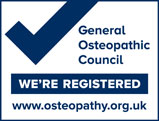Gravity-no laughing matter
At northlondonosteopaths Alan Nevies and his colleagues are focused on the muscular skeletal health of all ages and stages of the population. A recent article revealed that astronauts are suffering from back pain. (We do not see too many astronauts at northlondonosteopaths but it was food for thought for Alan Nevies and his colleagues.) This was previously thought to be a result of the swelling of the discs, but now it seems that the cause is the effect of weightlessness on the muscles. Armed with this information it is now possible to relieve the pain by doing muscle strengthening yoga exercises that will help this particular issue. As for the rest of the population that enjoy the benefits of gravity, they too can benefit from these good practices. So up up and away with a lifestyle that is free of back pain whether you are in a space ship or rooted to the ground.
We would suggest the exercises below as being of general benefit.
Bird dog:
- Start on all fours, with your spine in a neutral position (not arching upward or downward). Make sure your hands are in line with your shoulders and your knees are in line with your hips.
- Contract your ab muscles.
- Lift one arm upward and straight forward, until it’s fully straightened parallel to the floor, and lift the opposite leg straight back so it’s also straight and parallel to the floor.
- Try to keep your back and head still while moving from your hips and shoulders.
- Hold for about 10 seconds. (Do not hold for more than 10 seconds if you have a history of back pain.)
- Bring your arm and leg back to the starting position.
- Repeat with the opposite arm and leg.
This exercise works most of the muscles in your back, including the erector spinae (which is the group of muscles that runs vertically down the back, close to the spine) and the rhomboid muscles (which run from the spine outward toward the shoulder blades). It even works the gluteus maximus (or glutes) in the butt, which are also important for core strength.
Exactly how many repetitions you do for each of the “big three” exercises will depend on your physical shape and whether you have a history of back pain. But you should aim to do the same number of sets and repetitions for each of these three exercises, so that you work the muscles in the side, back and front of your core equally. For people with back pain Alan Nevies recommends performing the exercises in what’s called a “Russian descending pyramid.” An example of this pyramid would be performing five repetitions on one side and then five repetitions on the other side, with 10 seconds of rest in between. Then, do another set of three repetitions on each side (resting in between), and a final set of one repetition on each side.
Side plank:
- Lie on your side, with your elbow and forearm flat on the floor (with your elbow in line with your shoulder, and bent at a 90-degree angle).
- Bend your knees.
- Lift yourself up by your hips, so that your upper body forms a straight line down to your knees.
- Hold this position for 10 seconds, and switch to the other side.
- To make this exercise harder, do the same exercise, but keep your legs straight instead of bending them.
Modified curl-up:
- Lie on your back, with one leg straight along the floor, and one knee bent.
- Put your hands beneath your lower back, with your palms down (so that your hands are between your back and the floor).
- Lift your head and shoulders slightly (about a half inch) off the ground.
- Hold for about 10 seconds, and bring your head back to the floor.
- We hope that you benefit from these suggestions even if the highest you get is the top floor of a double decker bus.


